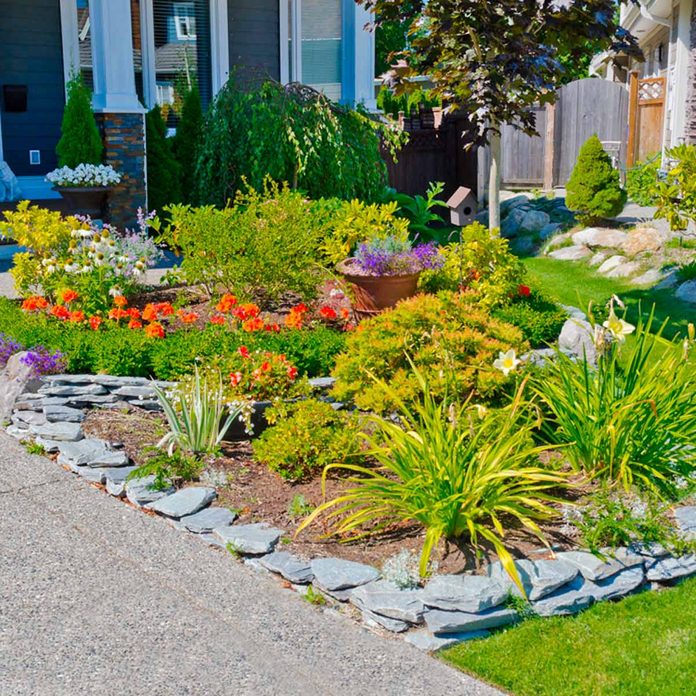
Stone Edging
There are a number of ways to use stone as garden bed edging in your landscaping. Stack flat rocks as seen here to create a barrier between your flower beds and your lawn or patio. You can also use rocks with a rounder shape and various colors for a distinctive look. To create a stone border, follow this guide.
Cost varies greatly by type of stone. The home improvement website improvenet.com notes stone edging can be more costly than other edging materials. If you have a way to collect stones somewhere (with permission from the land owner, of course), you can use those or sprinkle them in with stones you’e purchased.
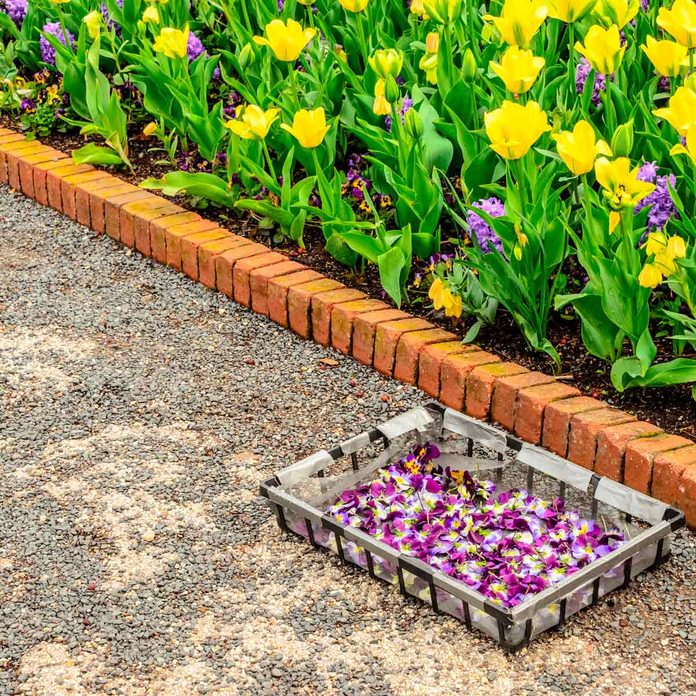
Brick Edging
Brick edging is a popular choice for edging flower beds because it’s durable and comes in a variety of colors. Home Advisor notes bricks may shift and pop loose, creating unattractive holes in your edging, so extra bricks may be required to fill in any gaps and replace bricks that crack over time. Bricks make great edging along paths as well as garden areas.
According to the web site: “To install individual brick edging, you must begin by preparing the area where the edging is flush with the ground (installing isolation materials will help prevent grass or weeds from growing between the individual blocks). Then, carefully place your blocks to ensure that your blocks are level to prevent a crooked-toothed effect when the edging is complete. Slight curves, dips and slopes in your lawn may present additional challenges.”
Try placing bricks horizontally or at an angle for an attractive edging option.
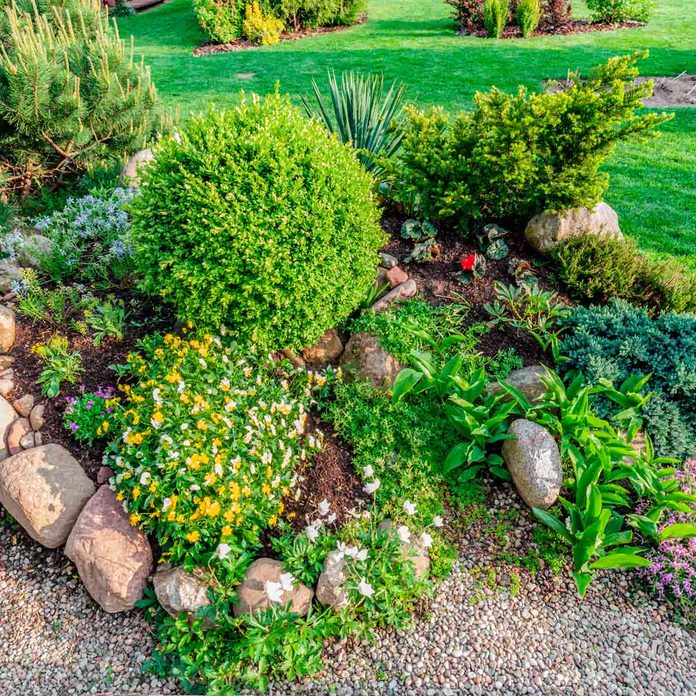
River Rock
River rock will give your landscaping and flower beds a natural look that will complement all the colors and textures of your plants. You can use river rock to prevent erosion, assist with drainage and cut down on weed growth.
River rock is hardly an unusual landscape border as it comes in a variety of colors and sizes. To use river rock as edging for your flower beds, dig a shallow trench where the rock will sit. SFGate.com suggests removing about three inches of soil to create the trench.
“Slope the trench by digging first on one side at an inward 45-degree angle and then on the opposite side at an inward 45-degree angle,” the story says. “The trench is primarily to hold the rock in place.” Cut landscape fabric to fit the trench and secure it to the ground with landscaping staples to prevent the growth of weeds. Then fill the trench with rock and spread it evenly.
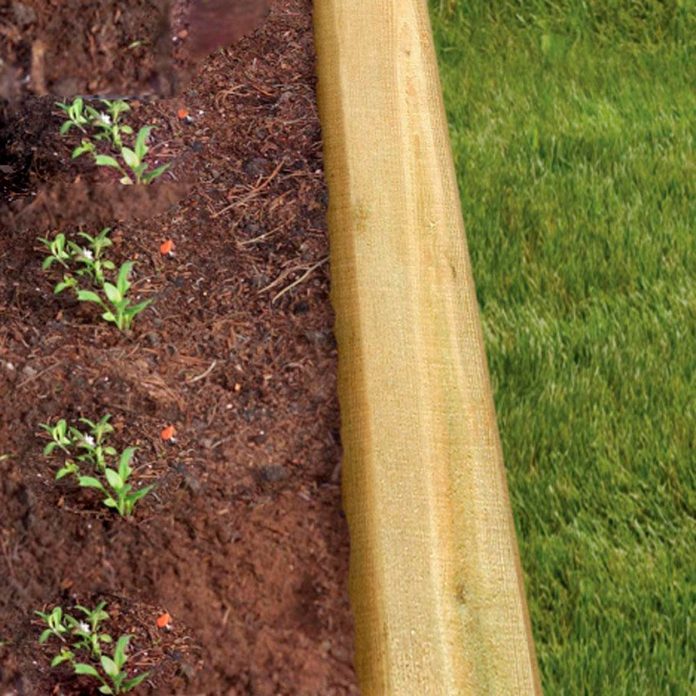
Railroad Ties
If the stone or brick edging look isn’t for you, try wood! The Home Depot notes landscape timbers and railroad ties are durable and relatively inexpensive compared to some other edging materials. “You can use them individually to outline straight beds or pile them on top of each other,” according to The Home Depot.
To use railroad ties as flower bed edging, start by digging a trench the same width as the timber to the depth you need. “If buried at least halfway, timbers will hold firm in the ground during frosts,” according to the website. “Logs strung together in one piece with plastic backing can simply be pushed into the ground and secured with stakes.”
There are two basic varieties of landscape timbers: synthetic and natural, notes improvenet.com. While treated wood is the most common type low maintenance landscape timber in the U.S., many property owners choose untreated to avoid the chemicals in treated wood.
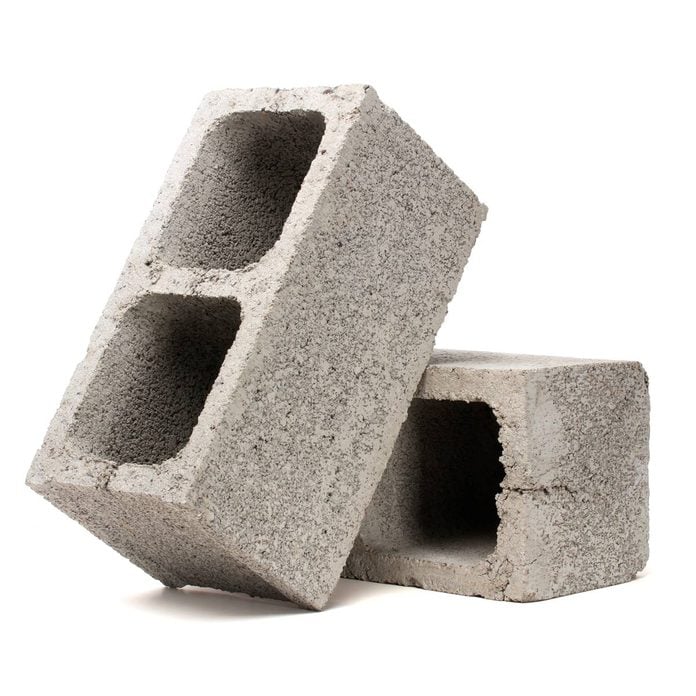
Cinder Block
Cinder blocks are one of the least expensive flower bed edging ideas. They are heavy enough to resist shifting while also holding off weeds.
SFGate.com notes the best way to use cinder blocks in your landscaping is to dig a trench about one-half of the depth of one of the blocks. Lay a piece of 2×4 lumber into the trench and use a small sledge hammer to compact the soil.
“Drive a wooden stake into the soil just outside each end of the trench, using a small sledge hammer,” the story says. “If the garden border has turns, place a stake at each corner. Tie a piece of string between the stakes. Place a cinder block into one corner of the trench, right next to a wooden stake.
“Press the block down firmly, then slide the string down on the stakes until it touches the top edge of the block. The string will serve as your guide to laying the stones even with one another.”
Then, place the next block in line with the first and use a rubber mallet to get it in the right position. Repeat the process until a cinder block edge runs around the entire flower bed.
“Fill in the spaces to the front and rear of the blocks with soil so the trench is completely covered,” the story says. “Use a garden hoe to move the soil into position and use a compactor to press the soil down firmly.”